TYPE DESIGN INFORMATION PAGE last updated on Thu Jan 1 09:56:43 EST 2026
FONT RECOGNITION VIA FONT MOOSE
|
|
|
|
|
Type design in Iran | ||
|
|
|
|
SWITCH TO INDEX FILE
Born in Tehran in 1985, Abolfazl Seilsepour designed the funny cartoon dingbnat typeface FarChehre (2012). Dafont link. [Google] [More] ⦿ | |
Download two Farsi truetype fonts, Pfont and Sepehr. [Google] [More] ⦿ | |
Graphic design studio in Tehran, Iran, est. 2012. They made several Latin display typefaces, like Line Art Font (2015, a multiline typeface) and a pixel font (2015). They designed the free floral decorative caps typefaces Haeckel (2016) and Je Suis Charlie (2014). Behance link. [Google] [More] ⦿ | |
Between 2000 and 2006, Ali Reza Mohazzab developed the free old Persian font Artaxerxes. OFL link. Github link. [Google] [More] ⦿ | |
Alireza Amiri
| |
| |
Tabriz, Iran-based designer (b. 1990) of these typefaces:
Github link. [Google] [More] ⦿ | |
Iranian graphic designer who lived in Turkey and after a stint in Washington Park, WA, he is now based in Germany. He graduated from B.A Hacettepe University in Ankara in 2012, and from the Mirak Fine Art School in Tabriz, Iran, in 2005. His typefaces: [Google] [MyFonts] [More] ⦿ | |
Amirmahdi Moslehi
| |
Pathetic quality from an aging company. Lots of choice though: Arabic fonts AlBayan (TrueType and Postscript), Baghdad (TrueType and Postscript), Cairo (bitmap), Geeza (TrueType and Postscript), Kufi (TrueType and Postscript), Nadeem (TrueType and Postscript), Thuluth (Postscript), Persian fonts Amir (TrueType and Postscript), Ashfahan (TrueType and Postscript), Kamran (TrueType and Postscript), Mashad (TrueType and Postscript), NadeemFarsi (TrueType and Postscript), Tehran (bitmap). [Google] [More] ⦿ | |
The Arabic script is used for the following languages: Arabic, Farsi (the official language of Iran), Jawi (the Arabic alphabet for Malay used until the 17th century), Kurdish, Pashto (the official language of Afghanistan), Sindhi (an Indo-Aryan language with about 9 million speakers in the south-eastern province of Sind in Pakistan and in India) and Urdu (the official language of Pakistan); it can also be used for Punjabi (which is spoken in Pakistan and the Indian state of Panjab, but only in Pakistan is it written using Arabic script). It is cursive, caseless, and written right-to-left. [Google] [More] ⦿ | |
This site has a number of free Arabic fonts: AF_Abha-Normal-Traditional, AF_Ed-Dammam-Normal-Traditional, AF_El-Khobar-Normal-Traditional, AF_Hijaz-Normal, AF_Jeddah-Normal-Traditional, AF_Najed-Normal-Traditional, AF_Quseem-Normal-Traditional, AF_Tabook-Normal-Traditional, AF_Tholoth-Normal-Traditional, AF_Unizah-Normal-Traditional, Andalus, FS_Alex, FS_Arabic, FS_Bold, FS_Cairo, FS_Diwany, FS_Fantazia, FS_Free, FS_Future, FS_Graphic, FS_Hilal, FS_Japan, FS_Jet, FS_Metal, FS_Nice, FS_Old, FS_Point, FS_Rope, MCS-Electron-S_U-normal, MCS-Hijon-S_U-normal, MCS-Hor-1-S_U-Normal-2000, MD_Farsi_1, MD_Farsi_2, Ousbouh. [Google] [More] ⦿ | |
Graphic designer in Nijmegen, The Netherlands. In 2011, he made the squarish typeface Mandaicana, about which he writes: Mandaicana is one of the few Mandaic type[faces] which exist in the world. Mandaic, the most Southeastern Aramaic dialect spoken in antiquity in Babylonia (Mesene, Characene, Khuzistan), reflects similarities to Jewish Babylonian Aramaic, both belonging to the Eastern Middle Aramaic branch. Although most scholars located the origin of the baptizing community in the East Jordan regions (Mark Lidzbarski, Rudolf Macuch, Kurt Rudolph) the Mandaeans are considered to spent a large part of their still controversial and mysterious history alongside the big rivers (Euphrates, Tigris, Karunriver) in the southern borderland between present-day Iraq and Iran. This was followed by Ardwan Malka and Englaiscana (2011). In 2018, he designed Ardwan Lidzbarski, which is based on the Mandaic handwriting of German scientist Mark Lidzbarski. Ardwan Manuscript (2019) is a cursive font based on Mandaic manuscripts. In 2021, he published Ardwan Drower, a mandaic font based on Ethel Stefana Drower's handwriting and philosophy. Lady Drower was a British cultural anthropologist who studied the Middle East and its cultures. She was regarded as the main specialist in Mandaeism and authored the book The Mandaeans of Iraq and Iran. [Google] [More] ⦿ | |
Tehran, Iran-based designer of an expermental multiline Latin alphabet in 2015. [Google] [More] ⦿ | |
Graphic designer, b. Tehran, Iran, 1986. A graduate of Azad University, he designed the squarish modular typeface family Ebtekar (2017, FontBros). Home page. Behance link. [Google] [More] ⦿ | |
Graduate from the College of Fine Arts, University of Tehran, 2012, b. 1988, Tehran. He created the Farsi typefaces Arya and Paakize in 2013. He currently works as a graphic designer in Salt Lake City, UT. [Google] [More] ⦿ | |
Aka Ashura. Tehran, Iran-based designer of the calligraphic Arab script dingbat typeface SHia (2007). Very original. Alternate URL. [Google] [More] ⦿ | |
Sells word processing software for Arabic, Pashto, Farsi and Urdu fonts for Windows 95 and Windows NT. The 300-800 USD packages include some TrueType fonts in these languages. [Google] [More] ⦿ | |
Dari, Farsi, Pashto, Urdu fonts at Asiatype in Pakistan. Commercial. [Google] [More] ⦿ | |
Awami Nastaliq
|
Awami Nastaliq was designed at SIL by Peter Martin. Github link. [Google] [More] ⦿ |
Aziz holds a BSC in Communication Engineering 1979, Basra University, and lives in Iran (Tehran) and Iraq (Basra). In 2011, he created two new Naskh fonts called Naskh Aziz. [Google] [More] ⦿ | |
Bagh-e Tafarroj Studio
|
|
In the TypeMedia program at KABK in Den Haag, Bahman designed the graduation typeface Tajrish (2015) for Latin and Arabic. In 2016, he designed the low-contrast Naskh family Diodrum Arabic (Indian Type Foundry). The Latin letterforms in Diodrum are monolinear and of large x-height. Still in 2016, he published the Naskh style Kohinoor Arabic (Indian Type Foundry). Award winner at 25 TDC in 2022 for Amaala Arabic (published at Interval Type). The Arabic part of this custom family is designed to capture the impression of Latin which is an elegant high contrast typeface with round terminals, curly structure, and round counters. The type system comes in three type families, "Sans", "Open Eye" and "Closed Eye". Speaker at ATypI 2018 in Antwerp (on the topic of the symbiosis of Latin and Arabic). Typotheque link. [Google] [MyFonts] [More] ⦿ | |
Creator of Shapur (2012) for inscriptional Pahlavi. [Google] [More] ⦿ | |
Seyed Behdad Esfahbod MirHosseinZadeh Sarabi is an Iranian-Canadian software engineer, type expert and free software developer. He worked at Google in Mountain View, CA, and at Facebook (2019-2020). At the time he quit Facebook, his annual salary, as reported by The New York Times, was 1.5 million dollars. Behdad Esfahbod was born in 1982 in Sari, Iran. While at high school Esfahbod won a silver in the 1999 International Olympiad in Informatics and then gold in 2000. He studied computer engineering at Sharif University in Tehran while discovering the world of computer typography and open source. In 2003 he moved to Canada, studied computer science at the University of Toronto (MSc, class of 2006), became a regular contributor to GNOME---he was a director at GNOME Foundation from 2007 to 2010, serving as the president from 2008 to 2009---and many other open source projects. Esfahbod was among the founders of Sharif FarsiWeb Inc. which carried out internationalization and standardization projects related to open source and Persian language. He worked at Red Hat, Google, and generally became the go-to person regarding everything font and text rendering in open source projects. Among the projects he has led are the cairo, fontconfig, HarfBuzz, and pango libraries, which are standard parts of the GNOME desktop environment, the Google Chrome web browser, and the LibreOffice suite of programs. He received an O'Reilly Open Source Award in 2013 for his work on HarfBuzz. In 2012, he obtained an MBA from the University of Toronto as well. Speaker at ATypI 2014 in Barcelona. The abstract of his talk there explains the current status of the FontTools package: FontTools/TTX is a Python package for converting OpenType font fonts to / from XML. It was developed in early 2000s by Just van Rossum and has been in wide use by the type community since, mostly for testing and inspection, but its development has had stopped for the most part. In Summer 2013 I resurrected FontTools development by adding support for many tables that have not been supported before (EBDT/EBLC, CBDT/CBLC, sbix, COLR/CPAL, SVG, ...), as well as implementing new tools: a full font subsetting tool, font inspection tool, font merge tool. In this talk I will talk about the community gathered around the new FontTools development as well as my plans to expand FontTools into a full Open Source font production pipeline. Speaker at ATypI 2015 in Sao Paulo. Speaker at ATypI 2016 in Warsaw on The Open Source Python Font Production Pipeline. Addendum: Read his personal story involving psychological torture by the Iranian government. New York Times article in August 2020 about his Iranian experience: Esfahbod was arrested by Islamic Revolutionary Guards Corps' intelligence unit during a 2020 visit to Tehran. He was then moved to Evin prison, where he was psychologically pressured and interrogated in solitary confinement for seven days. They downloaded all his private data from his devices. Iranian security forces let him go based on his promise to spy on his friends once he was back in United States. According to Linkedin, he is now based in Edmonton, Canada. Wikipedia link. [Google] [More] ⦿ | |
Tehran-based designer of the Persian font Beno (2011). [Google] [More] ⦿ | |
In 2015, he graduated from the MATD program at the University of Reading. His graduation typeface, Lida, blends Latin and Perso-Arabic in a multi-font family that includes Lida Sans, Lida Serif, Lida Avestan (for the Avestan script), and various styles of Lida Arabic that produce beautiful yet readable Naskh calligraphic texts. If Lida is any indication, Borna is destined for greatness. In 2015, he designed the free Latin / Farsi typeface Lalezar: During the 1960s and 1970s a genre of filmmaking emerged in Iran, which was commonly known as FilmFarsi. The main focus of the films produced in this period was on popular subjects such as, sexual romances, musicals and unrealistic heroic characters. The movie posters designed to represent these films were also intended to exaggerate these elements by the use of provocative imagery and a particular type of display lettering. These bold and dynamic letterforms were so popular and widely used that perhaps one can consider them the most significant component of film posters in that period. Lalezar is an attempt to revive the appealing qualities in this genre of lettering and transform them into a modern Arabic display typeface and a Latin companion. Lalezar won an award at Granshan 2016 and in the TDC Typeface Design competition in 2017. In 2018, Borna Izadpanah, Fiona Ross and Florian Runge co-designed the free Google Font Markazi Text. They write: This typeface design was inspired by Tim Holloway's Markazi typeface, with his encouragement, and initiated by Gerry Leonidas as a joint University of Reading and Google project. The Arabic glyphs were designed by Borna Izadpanah and design directed by Fiona Ross, they feature a moderate contrast. It takes its cues from the award-winning Markazi typeface, affording a contemporary and highly readable typeface. The complementary Latin glyphs were designed by Florian Runge. It keeps in spirit with its Arabic counterpart, echoing key design characteristics while being rooted in established Latin traditions. It is an open and clear design with a compact stance and an evenly flowing rhythm. Four weights are advertized at Google, but only the Regular is available. Behance link. GitHub link. Speaker at ATypI 2018 in Antwerp. [Google] [More] ⦿ | |
Arabic font archivette: AF_Tabook-NormalTraditional, AF_Tholoth-NormalTraditional, DecoTypeNaskhVariants, DecoTypeThuluth, DiwaniLetter, FS_Diwany, FarsiSimpleBold, M-Unicode-Dawlat, M-Unicode-Sima, OldAnticBold. [Google] [More] ⦿ | |
At the Dari Corner, find several free Dari/Farsi fonts for contemporary Dari Afghan writing: Forouzan, Khorshid. [Google] [More] ⦿ | |
Medium-sized truetype font archive run by the Government of Dubai. It has Thai fonts by Unity Progress, Farsi fonts, fonts for Arabic, many Microsoft fonts, and a basic starter set of Monotype fonts. [Google] [More] ⦿ | |
Ernst Tremel s based in Muenster, Germany. He designed a Devanagari font called ShiDeva that includes a "volt" table and many ligatures. His pages also cover Tamil, and one can download the ETTamilNew font. He also has a Kurdish font, as well as maps about the Kurds and about Indian languages. About the Kurdish font, he writes: Kurdish AllAlphabets contains 694 glyphs and 529 standard kern pairs: Latin, Cyrillic and Arabic script. There are OpenType tables for Arabic and embedded bitmaps included. He joined the Open Font Library movement. He offers Ahuramazda there, which is an alphabet for the Avestan language: Avestan was an Iranian language in which the earliest Zoroastrian hymns were orally transmitted since 1500 BCE. Due to lingusitic change, fluency in Avestan as spoken a thousand years earlier was deteorating, and hence the need to write the language became increasingly apparent. By the 3rd century CE an alphabet was created to write down the ancient Avestan language. OFL link. Alternate URL. And another URL. [Google] [More] ⦿ | |
Falling Angel Studio
| Falling Angel Studio in Partile, Gothenburg, Sweden, was established in 2009 by Alireza Amiri (b. 1986, Teheran). Their first fonts include Circ (pixelish), Ki Moa Triangle Park (2011, with Mohsen Khaki), Sandikza (scribbly hand), Smart (rounded hand-printed face), Smart Maximus, Entoferno, Kakeroon (2010), Scatterbrain, XMadness (dot matrix face), Smart Wix (2010), Mazigh (2010, hand-printed), Jebrill (2010), Khoft (2010, grungy stencil), Kanta Cube (2010, block letters), Smart Maximus (2010), and Smart Toxonic. The following alphading pages were published in 2012: Ghab Star David, Ghab Star Clipart, Ghab Star Bahai, Ghab Star, Ghab Leaf Plane, Ghab Leaf Lucky, Ghab Leaf, Ghab Heart Triple, Ghab Heart, Ghab Gravestone, Ghab Cloud, Ghab Bubble Speech Black, Ghab Bubble Speech 2, Ghab Bubble Speech, Ghab Bottle, Ghab Atom. They were created jointly by Alireza Amiri and Sevin Shiva. Kokab (2012, with Sevin Shiva) and Azad (2012, with Sevin Shiva) are elegant black extended display typefaces. Bisheh (2012, with Sevin Shiva) is a condensed sans display family. Vierw Alireza Amiri's typefaces. [Google] [MyFonts] [More] ⦿ |
Iranian graphic artist and typographer, who runs Farhood Design. [Google] [More] ⦿ | |
Jasmin truetype font, copyright Farsi Info. [Google] [More] ⦿ | |
Farsi TEX program and fonts. Page by Hassan Abolhassani. 1MB worth of zipped Farsi fonts. [Google] [More] ⦿ | |
FarsiTex Project Team
|
In 2014, Vafa Khalighi published the free Parisa fonts, 12 Opentype fonts also based on the FarsiTeX Scientific fonts. The pacjkage is dedicated to Parisa Abbasi. [Google] [More] ⦿ |
FarsiWeb (or: Sharif FarsiWeb Inc)
| Free Software Foundation-style Farsi font project at FarsiWeb. Roozbeh Pournader is the head developer here. He was helped by Elnaz Sarbar, Behdad Esfahbod, Behnam Pournader, Aidin Nassiri, Behnam Esfahbod, and Alireza Kheirkhahan. The FarsiFonts project is sponsored by the High Council of Informatics of Iran and Sharif University of Technology. FarsiFonts are Unicode fonts, and are the first set of fonts ever to conform to the Iranian national standard ISIRI 6219. The fonts currently support the Persian, Arabic, and Azerbaijani languages (as written in the Arabic script). The font names: Elham (2004), Homa (2003), Koodak (2003), Nazli (2004, based on Nazanin), Nazli-Bold (2004), Roya (2003), Roya-Bold (2003), Terafik (2004), Terafik-Bold (2004), Titr (2003). OFL link for Titr. Another OFL link [Google] [More] ⦿ |
Tabriz, Iran-based designer of an Arabic / Farsi typeface in 2014. [Google] [More] ⦿ | |
Creator (b. 1972, Kerman, Iran) of some free typefaces, such as the Ugaritic typefaces Khosrau (2011), Kakoulookiam (2011) and Zarathustra (2011). His typeface Havlova Austral (2012) is based on the calligraphy of Czech-Australian photographer Sonia Havlova Makac. Mobitale (2012) is a large squarish type family. Finally, Prince of Persia (2012) is an Arabic simulation typeface based on the logo of a game by that name. Scriptus (2012) is a modification of Scriptina (Apostrophic Labs). Fereydoun explains the three differences: a more careful spacing, 2816 kerning pairs (Scriptina True Type has none) and soft hooks instead of large descender and ascender closed laces. Fontspace link. [Google] [More] ⦿ | |
GNU Freefont (or: Free UCS Outline Fonts)
|
Fontspace link. Crosswire link for Free Monospaced, Free Serif and Free Sans. Download link. [Google] [More] ⦿ |
Born in 1891 in the city of "Diyar-e-Bakr" south Anatolia, Turkey. His real name is "Moses Azmi", the renamed as "Hamid Aytash Alamidi" after his village. He studied in the great Mosque named "Ulu" in his village. His calligraphy work embodied all kinds of Arab calligraphic types, but he was greatly famous in "Jali Thulth". Hamid Al Amidi has many writings on the domes and walls of mosques which can be seen in Turkey as a legacy of some of his calligraphy for verses of the Holy Quran, such as: "Ayoub Mosque", "Paschbahchi Mosque", "Haji Koushk Mosque" in Istanbul, the dome of "Cokhateb Mosque" in Ankara and many other mosques in Istanbul and Densley and "Shana Kalaa". The master piece of his production was when he copied the Holy Quran twice in a beautiful Nsekh type. It has been reprinted recently in Istanbul and Berlin. [Google] [More] ⦿ | |
Hamoon Soft
| Hussein Ebrahimy is the designer at Hamoon Soft of the Latin-Arabic sans serif font Yekan-Iran-System (1997). Free, truetype. [Google] [More] ⦿ |
Iranian designer of the Latin typeface Kalhor (2013). Fontspace link for BG Design. [Google] [More] ⦿ | |
Tehran, Iran-based graphic and type designer. In 2013, he created the Farsi typeface Novin which won an award at Granshan 2014. Novin Web (2014) was co-designed with Reza Bakhtiarifard. [Google] [More] ⦿ | |
Creator in 2013 of Persian HM-FTX. This large free CTAN package of fonts contains HM_FTXarshia-Bold, HM_FTXarshia-BoldItalic, HM_FTXarshia-BoldOblique, HM_FTXarshia-Italic, HM_FTXarshia-Oblique, HM_FTXarshia-Outline, HM_FTXarshia-OutlineItalic, HM_FTXarshia-OutlineOblique, HM_FTXarshia-Shadow, HM_FTXarshia-ShadowItalic, HM_FTXarshia-ShadowOblique, HM_FTXarshia, HM_FTXbadr-Bold, HM_FTXbadr-BoldItalic, HM_FTXbadr-BoldOblique, HM_FTXbadr-Italic, HM_FTXbadr-Oblique, HM_FTXbadr-Outline, HM_FTXbadr-OutlineItalic, HM_FTXbadr-OutlineOblique, HM_FTXbadr-Shadow, HM_FTXbadr-ShadowItalic, HM_FTXbadr-ShadowOblique, HM_FTXbadr, HM_FTXelham-Bold, HM_FTXelham-BoldItalic, HM_FTXelham-BoldOblique, HM_FTXelham-Italic, HM_FTXelham-Oblique, HM_FTXelham-Outline, HM_FTXelham-OutlineItalic, HM_FTXelham-OutlineOblique, HM_FTXelham-Shadow, HM_FTXelham-ShadowItalic, HM_FTXelham, HM_FTXfarnaz-Bold, HM_FTXfarnaz-BoldItalic, HM_FTXfarnaz-BoldOblique, HM_FTXfarnaz-Italic, HM_FTXfarnaz-Oblique, HM_FTXfarnaz-Outline, HM_FTXfarnaz-OutlineItalic, HM_FTXfarnaz-OutlineOblique, HM_FTXfarnaz-Shadow, HM_FTXfarnaz-ShadowItalic, HM_FTXfarnaz-ShadowOblique, HM_FTXfarnaz, HM_FTXhoma-Bold, HM_FTXhoma-BoldItalic, HM_FTXhoma-BoldOblique, HM_FTXhoma-Italic, HM_FTXhoma-Oblique, HM_FTXhoma-Outline, HM_FTXhoma-OutlineItalic, HM_FTXhoma-OutlineOblique, HM_FTXhoma-Shadow, HM_FTXhoma-ShadowItalic, HM_FTXhoma-ShadowOblique, HM_FTXhoma, HM_FTXjadid-Bold, HM_FTXjadid-BoldItalic, HM_FTXjadid-BoldOblique, HM_FTXjadid-Italic, HM_FTXjadid-Oblique, HM_FTXjadid-Outline, HM_FTXjadid-OutlineItalic, HM_FTXjadid-OutlineOblique, HM_FTXjadid-Shadow, HM_FTXjadid-ShadowItalic, HM_FTXjadid-ShadowOblique, HM_FTXjadid, HM_FTXkamran-Bold, HM_FTXkamran-BoldItalic, HM_FTXkamran-BoldOblique, HM_FTXkamran-Italic, HM_FTXkamran-Oblique, HM_FTXkamran-Outline, HM_FTXkamran-OutlineItalic, HM_FTXkamran-OutlineOblique, HM_FTXkamran-Shadow, HM_FTXkamran-ShadowItalic, HM_FTXkamran-ShadowOblique, HM_FTXkamran, HM_FTXkoodak-Bold, HM_FTXkoodak-BoldItalic, HM_FTXkoodak-BoldOblique, HM_FTXkoodak-Italic, HM_FTXkoodak-Oblique, HM_FTXkoodak-Outline, HM_FTXkoodak-OutlineItalic, HM_FTXkoodak-OutlineOblique, HM_FTXkoodak-Shadow, HM_FTXkoodak-ShadowItalic, HM_FTXkoodak-ShadowOblique, HM_FTXkoodak, HM_FTXlotoos-Bold, HM_FTXlotoos-BoldItalic, HM_FTXlotoos-BoldOblique, HM_FTXlotoos-Italic, HM_FTXlotoos-Oblique, HM_FTXlotoos-Outline, HM_FTXlotoos-OutlineItalic, HM_FTXlotoos-OutlineOblique, HM_FTXlotoos-Shadow, HM_FTXlotoos-ShadowItalic, HM_FTXlotoos-ShadowOblique, HM_FTXlotoos, HM_FTXmitra-Bold, HM_FTXmitra-BoldItalic, HM_FTXmitra-BoldOblique, HM_FTXmitra-Italic, HM_FTXmitra-Oblique, HM_FTXmitra-Outline, HM_FTXmitra-OutlineItalic, HM_FTXmitra-OutlineOblique, HM_FTXmitra-Shadow, HM_FTXmitra-ShadowItalic, HM_FTXmitra-ShadowOblique, HM_FTXmitra, HM_FTXnasim-Bold, HM_FTXnasim-BoldItalic, HM_FTXnasim-BoldOblique, HM_FTXnasim-Italic, HM_FTXnasim-Oblique, HM_FTXnasim-Outline, HM_FTXnasim-OutlineItalic, HM_FTXnasim-OutlineOblique, HM_FTXnasim-Shadow, HM_FTXnasim-ShadowItalic, HM_FTXnasim-ShadowOblique, HM_FTXnasim, HM_FTXnazli-Bold, HM_FTXnazli-BoldItalic, HM_FTXnazli-BoldOblique, HM_FTXnazli-Italic, HM_FTXnazli-Oblique, HM_FTXnazli-Outline, HM_FTXnazli-OutlineItalic, HM_FTXnazli-OutlineOblique, HM_FTXnazli-Shadow, HM_FTXnazli-ShadowItalic, HM_FTXnazli-ShadowOblique, HM_FTXnazli, HM_FTXroya-Bold, HM_FTXroya-BoldItalic, HM_FTXroya-BoldOblique, HM_FTXroya-Italic, HM_FTXroya-Oblique, HM_FTXroya-Outline, HM_FTXroya-OutlineItalic, HM_FTXroya-OutlineOblique, HM_FTXroya-Shadow, HM_FTXroya-ShadowItalic, HM_FTXroya-ShadowOblique, HM_FTXroya, HM_FTXsf-Bold, HM_FTXsf-BoldItalic, HM_FTXsf-BoldOblique, HM_FTXsf-Italic, HM_FTXsf-Oblique, HM_FTXsf-Outline, HM_FTXsf-OutlineItalic, HM_FTXsf-OutlineOblique, HM_FTXsf-Shadow, HM_FTXsf-ShadowItalic, HM_FTXsf-ShadowOblique, HM_FTXsf, HM_FTXtabasm-Bold, HM_FTXtabasm-BoldItalic, HM_FTXtabasm-BoldOblique, HM_FTXtabasm-Italic, HM_FTXtabasm-Oblique, HM_FTXtabasm-Outline, HM_FTXtabasm-OutlineItalic, HM_FTXtabasm-OutlineOblique, HM_FTXtabasm-Shadow, HM_FTXtabasm-ShadowItalic, HM_FTXtabasm-ShadowOblique, HM_FTXtabasm, HM_FTXtitr-Bold, HM_FTXtitr-BoldItalic, HM_FTXtitr-BoldOblique, HM_FTXtitr-Italic, HM_FTXtitr-Oblique, HM_FTXtitr-Outline, HM_FTXtitr-OutlineItalic, HM_FTXtitr-OutlineOblique, HM_FTXtitr-Shadow, HM_FTXtitr-ShadowItalic, HM_FTXtitr-ShadowOblique, HM_FTXtitr, HM_FTXtrafik-Bold, HM_FTXtrafik-BoldItalic, HM_FTXtrafik-BoldOblique, HM_FTXtrafik-Italic, HM_FTXtrafik-Oblique, HM_FTXtrafik-Outline, HM_FTXtrafik-OutlineItalic, HM_FTXtrafik-OutlineOblique, HM_FTXtrafik-Shadow, HM_FTXtrafik-ShadowItalic, HM_FTXtrafik-ShadowOblique, HM_FTXtrafik, HM_FTXyaghut-Bold, HM_FTXyaghut-BoldItalic, HM_FTXyaghut-BoldOblique, HM_FTXyaghut-Italic, HM_FTXyaghut-Oblique, HM_FTXyaghut-Outline, HM_FTXyaghut-OutlineItalic, HM_FTXyaghut-OutlineOblique, HM_FTXyaghut-Shadow, HM_FTXyaghut-ShadowItalic, HM_FTXyaghut-ShadowOblique, HM_FTXyaghut, HM_FTXzar-Bold, HM_FTXzar-BoldItalic, HM_FTXzar-BoldOblique, HM_FTXzar-Italic, HM_FTXzar-Oblique, HM_FTXzar-Outline, HM_FTXzar-OutlineItalic, HM_FTXzar-OutlineOblique, HM_FTXzar-Shadow, HM_FTXzar-ShadowItalic, HM_FTXzar-ShadowOblique, HM_FTXzar. He also made a second Persian typeface family called Persian HM-XBS in 2013. This includes HM_XBKayhan-Bold, HM_XBKayhan-BoldItalic, HM_XBKayhan-Italic, HM_XBKayhan, HM_XBKayhanNavaar, HM_XBKayhanPook, HM_XBKayhanSayeh, HM_XBKhoramshahr-Bold, HM_XBKhoramshahr-BoldItalic, HM_XBKhoramshahr-Italic, HM_XBKhoramshahr-Oblique, HM_XBKhoramshahr-ObliqueBold, HM_XBKhoramshahr, HM_XBNiloofar-Bold, HM_XBNiloofar-BoldItalic, HM_XBNiloofar-Italic, HM_XBNiloofar, HM_XBRiyaz-Bold, HM_XBRiyaz-BoldItalic, HM_XBRiyaz-Italic, HM_XBRiyaz, HM_XBRoya-Bold, HM_XBRoya-BoldItalic, HM_XBRoya-Italic, HM_XBRoya, HM_XBShafigh-Bold, HM_XBShafigh-BoldItalic, HM_XBShafigh-Italic, HM_XBShafigh, HM_XBShafighKurd-Bold, HM_XBShafighKurd-BoldItalic, HM_XBShafighKurd-Italic, HM_XBShafighKurd, HM_XBShafighUzbek-Bold, HM_XBShafighUzbek-BoldItalic, HM_XBShafighUzbek-Italic, HM_XBShafighUzbek, HM_XBShiraz-Bold, HM_XBShiraz-BoldItalic, HM_XBShiraz-Italic, HM_XBShiraz, HM_XBSols-Bold, HM_XBSols-BoldItalic, HM_XBSols-Italic, HM_XBSols, HM_XBTabriz-Bold, HM_XBTabriz-BoldItalic, HM_XBTabriz-Italic, HM_XBTabriz, HM_XBTitre-Italic, HM_XBTitre, HM_XBTitreShadow-Italic, HM_XBTitreShadow, HM_XBYagut-Bold, HM_XBYagut-BoldItalic, HM_XBYagut-Italic, HM_XBYagut, HM_XBYas-Bold, HM_XBYas-BoldItalic, HM_XBYas-Italic, HM_XBYas, HM_XBZar-Bold, HM_XBZar-BoldItalic, HM_XBZar-Italic, HM_XBZar-Oblique, HM_XBZar-ObliqueBold, HM_XBZar, HM_XMTraffic-Bold, HM_XMTraffic-BoldItalic, HM_XMTraffic-Italic, HM_XMTraffic, HM_XMVahid-Bold, HM_XMVahid-BoldItalic, HM_XMVahid-Italic, HM_XMVahid, HM_XMYermook-Bold, HM_XMYermook-BoldItalic, HM_XMYermook-Italic, HM_XMYermook, HM_XPVosta-Bold, HM_XPVosta-BoldItalic, HM_XPVosta-Italic, HM_XPVosta, HM_XPZiba-Bold, HM_XPZiba-BoldItalic, HM_XPZiba-Italic, HM_XPZiba. [Google] [More] ⦿ | |
| |
Hossein Zahedi
| |
Hussein Ebrahimy
| |
Free Arabic truetype fonts: Nasim, Sepehr2, Web-Thulth, Sepehr---Normal, WEB-Rostam, Yekta, Web-Trafic. These are all Monotype fonts, except WEB Rostam, which is in the Apadana Farsi WEB Fonts Collection by John Yaralian (1996). [Google] [More] ⦿ | |
At this site, we find a free font called Old Persian Cuneiform. They write: Darius I [522---486 BC] claims credit for the invention of Old Persian Cuneiform in an inscription on a cliff at Behistun in south-west Iran. The inscription dates from 520 BCE and is in three languages - Elamite, Babylonian and Old Persian. Some scholars are sceptical about Darius' claims, others take them seriously, although they think that Darius probably commissioned his scribes to create the alphabet, rather than inventing it himself. Old Persian, the language used in the cuneiform inscriptions of Achaemenian dynasty and the vernacular of the Achaemenian elite. Old Persian was spoken in southwestern Persia, an area known as Persis, and belongs to the Iranian branch or the Indo-Aryan family of languages. [Google] [More] ⦿ | |
IranVision1 and IranVision2 are fonts for Farsi. [Google] [More] ⦿ | |
A free mixed Farsi/Roman font based on Times. Truetype. [Google] [More] ⦿ | |
The Iranian family of the fonts are designed with the support of the Iranian National Initiative for Free and Open Source Software to provide a good-looking and free font for Persian script. It consists of Iranian Sans and Iranian Serif. The designers are Hadi Navid and Hooman Mehr (Neviseh Pardaz Co. Ltd). Download for the Open Font Library. When blown up, the glyphs show a lack of smoothness in the outlines. [Google] [More] ⦿ | |
Behrouz writes in Ping Mag about Iranian typography and calligraphy. [Google] [More] ⦿ | |
| |
Berlin and Frankfurt-based company which published these fonts for ancient Middle Eastern scripts between 1990 and 2001: TitusAncientNeareastNormal, TitusArabic-Farsi, TitusArmenianNormal, TitusAsomtavruliMrglovani, TitusAsomtavruliMrglovani, TitusAsomtavruliNuskhuri, TitusBaltic, TitusBibleGothic, TitusBuzuku, TitusChristianEastNormal, TitusCyrillicNormal, TitusECLINGMxedruli-Normal, TitusECLINGTranscription-Bold, TitusECLINGTranscription-Italic, TitusECLINGTranscription, TitusEastEuropeanNormal, TitusGreekNormal, TitusGreekReverseNormal, TitusHebrew-Normal, TitusHebrewNormal, TitusIndoIranianNormal, TitusIndologyNormal, TitusKroatianGlagolicaNormal, TitusManichean, TitusMiddleIranian-Normal, TitusMxedruliNormal, TitusNearEastNormal, TitusNuskhaKhutsuri, TitusOghamNormal, TitusOldGeorgian, TitusOldPersianNormal, TitusOldPersianNormal, TitusOscanInscriptionsNormal, TitusRoundGlagolicaNormal, TitusRunicNormal, TitusSlavonicNormal, TitusSogdianIntNormal, TitusSyriacEstrangelo, TitusSyriacNestorian, TitusSyriacNestorianNormal, TitusSyriacSerto, TitusSyriacSertoNormal, TitusTaanaNormal, TitusUmbrianInscriptionsNormal, TitusWesternNormal. Downloadable here. [Google] [More] ⦿ | |
Jomhuria
|
|
KACST stands for King Abdulaziz City for Science and Technology. A family of Arabic typefaces was made for KACST by CRI, the Computer Research Institute, and has names that contain the prefic Kacst. The following Latin-Arabic fonts were donated by URW under general GNU license: KacstArt, KacstBook, KacstDecorative, KacstDigital, KacstFarsi, KacstLetter, KacstPoster, KacstQura, KacstQuraFixed, KacstQurn, KacstTitle, KacstTitleL. Download them here. See also here. At OFL, one can download the Arabic Naskh typeface KacstOne (2012) and most other KACST typefaces: KACST Title L, KACST Title, KACST Screen, KACST Qurn, KACST Poster, KACST Pen, KACST Office, KACST Naskh, KACST Letter, KACST Farsi, KACST Digital, KACST Decorative, KACST Book, KACST Art. Another OFL link. [Google] [More] ⦿ | |
Based in Tehran, Karin Karim-Masihi created the hexagonal Latin typeface Natural Prism in 2014. [Google] [More] ⦿ | |
Karl Nayeri
| |
KB Studio
|
|
Kitabat Arabic Calligraphy and Typography Conference was the first major conference dealing solely with Arabic calligraphy and type design. Held from April 5-8, 2006, in Dubai. Speakers included Nabil Safwat (keynote speaker), Ugur Derman (Istanbul, Turkey), Mohamed Zakariya (Virginia, USA), Dr Goeffrey Roper (London, UK), Mamoun Sakkal (Seattle, USA), Johannes Bergerhausen (Germany), Adil Allawi (Diwan, UK), Kamal Mansour (Monotype, USA), Bruno Steinert (Linotype, Germany), Mounir Al-Shaarani (Cairo, Egypt), Huda Smitshuijzen AbiFares (AUD, UAE / Khatt, Holland), Nadine Chahine (Linotype, Germany), Gerard Unger (Bussum, Holland), Tajelssir Hassan (Sharjah, UAE), Reza Abedini (Teheran, Iran), Tarek Atrissi (Utrecht, Holland), Ihsan Hammouri (Jordan/USA), Obeida Sidani (Dubai, UAE), Yasmine Taan (LAU, Lebanon), Aida Sakkal (Seattle, USA), Antonia Carver (Dubai, UAE), Zeina Maasri (AUB, Lebanon), Fawzi Rahal (Dubai, UAE), Nadine Touma (Beirut, Lebanon), Leland Hill (VCU, Qatar), and Petr Van Blokland (Holland). [Google] [More] ⦿ | |
Kourosh Beigpour
| |
Kourosh Beigpour
| |
Czech site with helpful tables of all Latin and Slavic alphabets. Downloadable fonts made by Libor Sztemon in 2001 for his software, Liborsoft, include Cieszyn, Great Moravia, Zamane e Euransi e Nauromenis (an old version of Times NR Basque), CNR-Solca, Casy-EA-Bold (a didone), Casy-EA, Darseni-e-Afshenasi, Dee-Sathairn, Euransi-e-Nauromane, FZDHTJW--GB1-0, FZHLJW--GB1-0, GaramondWLHalbfett, Havirov, Johaansi-ye-Peyravi (blackletter), Khorshide_Iran, LiborsoftInternational, LinguaLatina, Masnavi-e-Nauromane, OldMoravianGlagolitic, Ostrava (a copy of Flyer), PrydEuro-Cymraeg, Shahanshah-e-Xatt, TNRLiboriusVII, TempsEuro-Catalan, Times-NR-Czech, Times-NR-Greenlandic, Times-of-EuransiLS, Times-of-SlaviskPSMT, Times-of-Slavs, Times-of-the-West, TimesNewRomanHungarian, Velehrad, VelehradBold, Zemanho-ye-Darseni, Ardashir-e-Urofarsi, Daftar-e-Urofarsi, Gam-e-Urofarsi, Jahan-e-Urofarsi, BohemiaLS, BohemiaPS-BoldLS, BohemiaPS-BoldItalicLS, BohemiaPS-ItalicLS, LiborsoftCzechia, MoraviaLS, Moravia-BoldLS, Moravia-BoldItalicLS, Moravia-ItalicLS, SilesiaLS, SilesiaPS-BoldLS, SilesiaPS-BoldItalicLS, LiborsoftSilesiaPS-ItalicLS, Miyane-ye-Urofarsi (Liborsoft), Name-ye-Urofarsi, Parvane-ye-Urofarsi, Peyk-e-Urofarsi, Sadsale-ye-Urofarsi, ahpur-e-Urofarsi, Setare-ye-Urofarsi, Siyah-e-Urofarsi, Times of Tajiki, Tarik-e-Urofarsi, Zeman-e-Darseni, Zaman-e-Urofarsi, TimesNREuskaraEuransiEsperanto, Friulan Nazzi-Faggin (2001, a didone). Additional fonts include Avestin e Euransi, Avraham, Courier New Darseni, Darseni e Masnavi, Euransi (old standard charset), Euransi Arial, Eurasian Times, Liborsoft Slavonia, LSU Darseni, Pravda, Times NR Lower Lach, and Times of Hebrew. Another directory. [Google] [More] ⦿ | |
LaserArabic and Farsi commercial fonts. Gene Sorensen: P.O.Box 580, Edmonds, WA 98020-0580, USA. Four fonts: Lateefi, Kitabi, Nargisi, Sarmast. [Google] [More] ⦿ | |
Arabic typefaces in the Linotype library: AlHarf AlJadid (a black titling font by Ismet Chanbour, 1985), Hassan (H. Sidahmed, 1993), Hisham (Ahmed Maged, 1993), Karim (Tim Holloway, 1994, in a generic Naskh style), Qalmi (a Nastaaliq font with horizontal stress), Lotus (Linotype staff, 1978; classic Ottoman Naskh book style font with extra glyphs for Kurdish, Farsi and Jawi), Maged (Linotype staff, 1956, 1987), Mariam (a modern headline font by Ismet Chanbour, 1992), Mofid Mahdi (Mofid Mahdi, 1985), Nazanin (Linotype staff, 1978; this was first called Haghighi), Qadi (Linotype staff, 1985, under the direction of Walter Tracy), Yakout (Linotype staff, 1911), Ahmed (simplified face, early 80s), Ahmed Outline, Amer (originally designed for dry transfer and licensed from Lettera Arabica; redrawn by Adrian Williams and then digitized; published in 1992), Badr (traditional Naskh style, early 70s), Jalal (1977), Kufi (Georges Dib, 1987), Kufi Outline (Linotype staff), Mitra (partially based on the Persian Naskh style, 70s). LinotypePideNashi is an Arabic simulation font. [Google] [More] ⦿ | |
| |
Designers of the Persian fonts X Andalus (2004), X Aria (2004), X Arabic (2004) and X Moj (2004), which can be found here. [Google] [More] ⦿ | |
Maker of these Arabic language fonts in 2004: X-Andalus-Italic, X-Andalus, X-Arabic-Italic, X-Arabic, X-Arash-Italic, X-Arash, X-Aria-Italic, X-Aria, X-Arshia-Italic, X-Arshia, X-Babak-Bold, X-Babak-Bold-Italic, X-Babak-Italic, X-Babak, X-Badr-Bold, X-Badr-Bold-Italic, X-Badr-Italic, X-Badr, X-Bam-Bold, X-Bam-Bold-Italic, X-Bam-Italic, X-Bam, X-Bijan-Bold, X-Bijan-Bold-Italic, X-Bijan-Italic, X-Bijan, X-Compset-Bold, X-Compset-Bold-Italic, X-Davat-Italic, X-Davat, X-Dorosht-Italic, X-Dorosht, X-Elham-Italic, X-Elham, X-Esfehan-Bold, X-Esfehan-Bold-Italic, X-Fantasy-Italic, X-Fantasy, X-Farnaz-Italic, X-Farnaz, X-Farsi-Italic, X-Farsi, X-Ferdosi-Italic, X-Ferdosi, X-Forouzan-Italic, X-Forouzan, X-Gity-Italic, X-Gity, X-Homa-Italic, X-Homa, X-Jadid-Bold, X-Jadid-Bold-Italic, X-Jalal-Bold, X-Jalal-Bold-Italic, X-Jalal-Italic, X-Jalal, X-Johar-Italic, X-Johar, X-Kamran-Bold, X-Kamran-Bold-Italic, X-Kamran-Italic, X-Kamran-Outline, X-Kamran, X-Kaveh-Italic, X-Kaveh, X-Kerman-Bold, X-Kerman-Bold-Italic, X-Kerman-Italic, X-Kerman, X-Khorsheed-Italic, X-Khorsheed, X-Koodak-Italic, X-Koodak-Outline, X-Koodak, X-Kufi-Italic, X-Kufi-Outline, X-Kufi, X-Mahsa-Italic, X-Mahsa, X-Majid-Shadow, X-Mashgh-Italic, X-Mashgh, X-Mitra-Bold, X-Mitra-Bold-Italic, X-Mitra-Italic, X-Mitra, X-Moj-Italic, X-Moj, X-Morvarid-Italic, X-Morvarid, X-Nahid-Bold, X-Nahid-Bold-Italic, X-Nahid-Italic, X-Nahid, X-Narm-Italic, X-Narm, X-Naskh-Bold, X-Naskh-Bold-Italic, X-Naskh-Italic, X-Naskh, X-Nazanin-Bold, X-Nazanin-Bold-Italic, X-Nazanin-Italic, X-Nazanin-Outline, X-Nazanin, X-Nima-Italic, X-Nima, X-Nimrooz-Italic, X-Nimrooz, X-Paatch-Bold, X-Paatch-Bold-Italic, X-Paatch-Italic, X-Paatch, X-Persian-Italic, X-Persian, X-Roya-Bold, X-Roya-Bold-Italic, X-Roya-Italic, X-Roya, X-Sahra-Italic, X-Sahra, X-Shafigh-Italic, X-Shafigh, X-Shiraz-Bold, X-Shiraz-Bold-Italic, X-Shiraz-Italic, X-Shiraz, X-Simin-Italic, X-Simin, X-Sina-Bold, X-Sina-Bold-Italic, X-Sousan-Italic, X-Sousan, X-Tabassom-Italic, X-Tabassom, X-Tawfig-Outline, X-Termeh-Italic, X-Termeh, X-Thulth-Italic, X-Thulth, X-Tir-Italic, X-Tir, X-Titre-Italic, X-Titre, X-Traffic-Bold, X-Traffic-Bold-Italic, X-Traffic-Italic, X-Traffic, X-Vahid-Italic, X-Vahid, X-Vosta-Italic, X-Vosta, XW-Zar-Bold, XW-Zar-Bold-Italic, XW-Zar-Italic, XW-Zar, X-Yagut-Bold, X-Yagut-Bold-Italic, X-Yagut-Italic, X-Yagut, X-Yas-Bold, X-Yas-Bold-Italic, X-Yas-Italic, X-Yas, X-Yekan-Italic, X-Yekan, X-Zar-Bold, X-Zar-Bold-Italic, X-Zar-Italic, X-Zar, X-Ziba-Italic, X-Ziba. From their site where you can download these: XW Zar font is a TrueType Arabic font covering Arabic, Persian, Urdu, Dari, Pashto, Uzbek, Kurdish, old (Ottoman) and new Turkish (Roman) languages with 'Open Type' and 'Apple Advanced Typography' technology support. It contains regular, italic, bold and bold italic typefaces. Zip file. OFL link, where one can downlaod XW Zar, XB Zar, XB Titre, XB Niloofar, XB Khoramshahr, XB Yagut, XB Riyaz, XB Roya, XB Shafigh, XB Shafigh Kurd, XB Shafigh Uzbek, XB Shiraz, XB Sols, XB Kayhan, XB Tabriz, XM Traffic, XP Paatch, Paatch, XM Vahid, XP Vosta, XM Yermook, XM Yekan, XB Yas, XP Ziba. All these fonts were made by Behnam. [Google] [More] ⦿ | |
Qom, Iran-based graphic, logo and type designer. He created these custom typefaces together with Reza Bakhtiarifard:
| |
| |
Teheran-based typographer. At Typography Day 2012 he speaks on Abilities Of Persian Typefaces&Persian Calligraphy In Stencil Type Design. [Google] [More] ⦿ | |
Majlis Research Center
| CEO of Tahavolgaran Arse Ettelaat in Tehran. His old site offered two free fonts: Sin-Titr-Bold (1997, Sina Dadras), and Mellat (1999, Majlis Research Center by Reza Arani). He explains that he was one of the first people to solve the problem of Persian scripts on web pages, and that his fonts were designed for that purpose, mainly. With permission of Arani, we offer the truetype versions of these fonts for free download: Mellat, Sin Titr Bold. [Google] [More] ⦿ |
Mamoun Sakkal
| |
Maryam is an Iranian graphic designer who lives in the United States. She designed three Farsi/Arabic typefaces: Khalaat, Vejahat, Taslim. [Google] [More] ⦿ | |
Designer of the Ostovar typeface for Persian in 2011. He lives in Sari, Iran. [Google] [More] ⦿ | |
Iranian graphic designer and calligrapher. [Google] [More] ⦿ | |
Masoud Mazar
| |
Iranian designer, born in Teheran. An expert in calligraphy, he won first prize at the 1st Islamic World Calligraphy Festival in 1996. He now teaches graphic design at Tehran Art College. At Bitstream, he published the Arabic simulation font Persia (2002). See also here. FontShop link. [Google] [More] ⦿ | |
Mazar Fonts
| Free Farsi truetype fonts by Masoud Mazar: BadrMazar, CompsetMazar, DivaniMazar, FerdosiMazar, GrandKufiMazar, HusseiniMazar (1996), KoodakMazar, LotusMazar, MajalleMazar, MajallaCondensedMazar, MajiidMazar (1996), MajiidShadedMazar, MashghMazar, MitraBoldMazar, MitraMazar, MudirMazar, NajahMazar, NasimMazar, NaskhMazar, NazaninMazar, RagheMazar, ReyhanMazar, ShafighMazar, SiavashMazar, SinaMazar, TawfighMazar, TawfigOutlineMazar, ThulthMazar, TitrMazar, TraficMazar. These fonts, which have a copyright notice of Glyph Systems and Monotype, 1993, require special software as they make heavy use of the GSUB tables for ligatures. some can be downloaded here. [Google] [More] ⦿ |
Designers of MD_Farsi_1 (1993) and MD_Farsi_2 (1993), which can be downloaded here. [Google] [More] ⦿ | |
| |
Iranian type designer, who won an award at Granshan 2016 for the display typeface Alef. [Google] [More] ⦿ | |
Designer in Boston, MA, who created the Farsi / Arabic typeface Mehraz in 2014. Behance link. [Google] [More] ⦿ | |
Born in Tehran in 1986, Mohsen Khaki now lives in Denmark where he designs type. With Alireza Amiri, he created Ki Moa Trinagle Mark (2011). [Google] [MyFonts] [More] ⦿ | |
Tehran-based designer (b. 1987) of a futuristic caps set in 2012, called Future Type. [Google] [More] ⦿ | |
Iranian dingbat font designer, b. 1985. His creations include Neckar (2012), Besmellah (2008, five fonts) and Mohammed RasoolAllah (2008). His fonts have calligraphic scripts, and religious icons. Alternate URL. Designer of the Arabic font Mj __ Tikeh, which can be found here. Irfont link. [Google] [More] ⦿ | |
Australian designer of Flux (1996), now a T-26 font. He ran Monib Design, and now has Mahdavi Design. Voca (a slightly grotesk sans) was made in 2004. He was born into a Baha'i family in Shiraz, Iran, in 1975 and migrated to Australia with his family prior to the Iranian revolution in 1979. [Google] [MyFonts] [More] ⦿ | |
Monotype sells fonts for the following languages: Amharic, Aksara Kaganga, Arabic, Armenian, Balinese, Burmese, Cambodian, Chinese, Coptic, Devanagari (Hindi/Marathi/Nepali), Farsi, Georgian, Glagolitic, Gujerathi, Gurmukhi (Punjabi), Hebrew, Japanese, Javanese, Jawi, Kannada, Korean, Laotian, Lontarak, Malayalam, Old Bulgarian, Oriya, Pushto, Sindhi, Sinhalese, Surat Pustaha, Syriac, Tamil, Telugu, Thai, Urdu, Vietnamese. [Google] [More] ⦿ | |
Persian type and graphic designer based in Shiraz, Iran. Creatpr of these Farsi / Arabic typefaces in 2014: Iran, Moslem. Behance link. [Google] [More] ⦿ | |
Saudi designer of Besmellah (five fonts for Arabic). I am confused because I always thought that these fonts were made by Mojtaba Kia, an Iranian. Alternate URL. [Google] [More] ⦿ | |
This Iranian university has many Farsi fonts. We find
| |
Naghi Naghachian
|
Ahoura (2011) is an Arabic font family. Decora One (2011) is a curly ornamental all caps face. Decora Two (2011) is another ornamental caps face. Bamdad Extra Bold Condensed (2011) is an Impact-like typeface Bamdad that supports Latin, Arabic, Persian, and Urdu. Parsi (2011) is an elliptical sans family that supports Latin, Arabic, Persian, and Urdu. Novin (2011, +Shadow) is an elliptical typeface that supports Latin, Arabic, Persian, and Urdu. Typefaces from 2012: Parto (elliptical). Typefaces made in 2013: Iranica, Avid Pro, Nima (a Latin/ Arabic techno family named after Persian poet Nima Yooshij, 1896-1960), Decora Arabic, Decora Pro (and its Arabic / Farsi / Urdu companion, Parvin), Ekbatana (for Latin, Arabic, Farsi and Urdu), Apadana (for Latin, Arabic, Persian and Urdu), Roumi Pro (an elegant inline typeface), Surprise Pro (headline rounded sans), Mocca Pro, Nana Pro, Nana Rounded Pro, Nana Arabic, Petrol Stencil (an Arabic / Urdu / Latin stencil typeface), Kashi (2015: inspired by 16th century building decorations in Iran). Typefaces from 2013: Ostad Arabic. Typefaces from 2016: Naghashian, Golestan (supports Arabic, Persian and Urdu), Babak (a techno family for Latin, Arabic, Persian and Urdu), Ostad Pro, Elogium Pro. Typefaces from 2017: Afsoon, Afsane, Jekta, Pasargad, Kamane (Naskh style for Arabic, Persian and Urdu), Damavand. Typefaces from 2018: Bieta, Afshid, Pegah, Homayoon, Hafez, Dara, Homa (for Arabic, Farsi and Urdu), BaBa Rounded, BaBa. Typefaces from 2019: Nahid, Nameh (a single-weight sans), Gilan, Jaleh, Bauhaus Arabic. Typefaces from 2020: Golnama (a prismatic typeface for Arabic, Persian, Urdu and Latin), Esfand, Bonyad (modern kufi / geometric sans), Art Deco Arabic, Behtab. Author of Illustrated Quatrains of Omar Khayyam, Geometrie als Mysterium, and Design and Structure of Arabic Script. Klingspor link. MyFonts link. [Google] [MyFonts] [More] ⦿ |
Naghi Naghashian
| |
Iran-born Nazanin Karimi (b. 1987) is a graphic design student at KABK in Den Haag. He created the Sans Collective typeface in 2012. [Google] [More] ⦿ | |
Iranian type foundry. One can download the Arabic / farsi typeface Iran Sans at Open Font Library. It was made jointly by Hadi Navid, Hooman Mehr, and Salman. Hadi Navid and Hooman Mehr created Iranian Serif (2014) and Iranian Sans (2014) as well. Link for Nevisa. [Google] [More] ⦿ | |
| |
Ahmed Alavi and Mahyar Rahmatian offer various free formats of the Farsi font Gerdsooz. [Google] [More] ⦿ | |
In 2018, Reza Bakhtiarifard and Omid Emamiam published the rounded monoline Arabic typeface Dabestan, and the corporate typeface MTN Irancell. [Google] [More] ⦿ | |
Iranian owner of a free Arabic font Nesf (2000). [Google] [More] ⦿ | |
Iranian master calligrapher, known for many intricate Farsi logotypes and calligraphic paintings. [Google] [More] ⦿ | |
Paymaan Jafari's page on Persian (Farsi) for Amigas. Download Sepehr (truetype Farsi), Iranafont by Ali Aarefi, and some font sets in Amiga bitmap format made by Paymaan himself under the name IPJ. [Google] [More] ⦿ | |
Iranian font designer who has made 30 Arabic fonts thus far. He works as a font designer for Hamoonsoft. His fonts: PF Bardia, PF Rojan, PF Khass, PF Paliz, PF FarzanehBold, PF Farzaneh, PF Form, PF Barbod, PF IranNastalig, PF Logo, PF Graphic, PF Graph, PF Kufa, PF Mohaghegh, PF Symbol Tablo, PF Typo. He also does custom font and logo work. [Google] [More] ⦿ | |
Parsfont
| Hossein Zahedi runs Parsfont in Tehran. In 2007-2008 he designed the Unicode-ready Farsi font IranNastaliq, a free typeface owned by scict.ir. At Parsfont, we can download Mola, and IranNastaliq for free. His commercial Arabic typefaces include Paliz, Khass, Faraz, Form, Kufa, Bardla, Barbod, Narin, Rojan, Zar, IranNastaliq (full version), ShekastehNastaliq, and Farzaneh. Scans: i, ii, ii. In 2010-2011, he published the free font Nabi for Arabic, Farsi, Pashto, Sindhi, Uighur and Urdu at Open Font Library. [Google] [More] ⦿ |
A free Arabic truetype font, Yekan-Iran-System (Hussein Ebrahimy, Hamoon Soft, 1997). [Google] [More] ⦿ | |
Tehran-based computer engineer who runs Paymaan Advanced Technologies. At his old site, you can find Amiga bitmap and scalable fonts for Farsi. [Google] [More] ⦿ | |
About ten free Farsi truetype fonts: Nasim (by Aidin Tavakkol, Rostam, Sepehr and Yekta (Monotype), and WEB_Yazd (from The Apadana Farsi WEB Fonts Collection by John Yaralian). Also, Web Rostam, Web Thulth, Web Trafic, Iran System Navid. [Google] [More] ⦿ | |
Designers of the Persian fonts pHalls Kamand (2005), pHalls Khodkar (2005), pHalls Tannaz (2005), which can be found here and here. [Google] [More] ⦿ | |
Peter Martin
| |
| |
Prime Graphics (was: PolyType)
| Sports glyphs, dingbats, ornaments, by Karl Nayeri, made in 1993 at PolyType, now Prime Graphics. Nayeri studied at University of Paris I (Panthéon-Sorbonne) and Institute of Technology of Tehran. He now lives in West Palm Beach, FL. His fonts: Polytype-Optix, PolytypeAllure, PolytypeAnimals, PolytypeArrowtek, PolytypeArtdeco, PolytypeBirds, PolytypeBusIcon, PolytypeCorners, PolytypeCorners, PolytypeFruits, PolytypeHolidays, PolytypeImages, Polytype Leisure (2004), PolytypeOptyx, PolytypeOrnaments, PolytypePatterns, PolytypeVegetables. MyFonts sells these typefaces by Nayeri: Achiva, Arius, Aviana, Balboa, Betique, Bohemian, Boracho, Bristol, Exvoto, Fouras, Fulton, Janus, Kaptiva, Montique, Polyma, Polytype Animals, Polytype Images, Polytype Birds, Polytype Ornaments, Polytype Sports, Polytype Fruits, Polytype Arrowtek, Polytype Leisure, Polytype Business Icons, Polytype Vegetables, Polytype Allure, Polytype Holidays, Polytype Art Deco, Polytype Optyx, Polytype Corners, Polytype Artimus I Frames, Polytype Artimus II Frames, Polytype Brutus I Frames, Polytype Brutus II Frames, Polytype Dumas I Frames, Polytype Dumas II Frames, Polytype Medoc I Frames, Polytype Medoc II Frames, Polytype Numa Frames, Polytype Patterns, Shiraz, Signum, Sombrero, Soraya (2004, avant garde), Vasco, Vitalique, Wichita, Woko, Xerxes, Yakima, Zealous. For a period of time, he permitted distribution of his library to International Type Fonders, but now his fonts can be bought from MyFonts. The typophiles raised an argument about Soraya (2004), which seemed very close to Cirkulus (Michael Neugebauer, Letraset). Images of some of Nayeri's typefaces. Catalog. The Prime Graphics typeface library. [Google] [MyFonts] [More] ⦿ |
Free Farsi and Arabic fonts by Borna Rayaneh, SinaSoft and MacFarsi. This is also a page with font links for a variety of languages. [Google] [More] ⦿ | |
Contemporary Teheran-based designer who has explored and expanded the possibilities of Farsi typography. He composes text into figures, posters and paintings. Speaker at ATypI 2010 in Dublin. [Google] [More] ⦿ | |
Reza Arani
| |
In 2015, he made Yekan Bakh, Chista UI and the handcrafted Leila. In 2017, together with Omid Emamiam, he designed the wonderful Farsi font Vazeh Quranic. Ray (by Reza Bakhtiarifard and Omid Emamiam) won an award at Granshan 2017. Both Ray and Vazeh won awards at TDC Typeface Design 2018. In 2017, he designed Nian for Arabic, Urdu, Kurdish and Jawi. Typefaces from 2018: Khameneir, MTN Irancell (with Omid Emamiam), Dabestan (a rounded monoline Arabic typeface by Reza Bakhtiarifard and Omid Emamiam). Typefaces from 2020: Ayendeh Bank Typeface (commissioned; with Mahdi Ershadi). Typefaces from 2021: Alibaba Travels Co Typeface (custom; with Mahdi Ershadi). | |
Roozbeh Pournader
| |
Tehran-based designer of the free Persian / Arabic handcrafted typefaces Shabnam (2015), Vazir (2015-2019) and (2015-2022, Google Fonts). Vazirmatn grew out of Vazir and is based for the Arabic/Persian part on DejaVu Sans, and for the Latin part on Roboto. Github link. | |
Designer at AreanGraphics (Esfahan, Iran) of Arab and Farsi truetype fonts. [Google] [More] ⦿ | |
In 2017, she published Athelas Arabic at TypeTogether, to accompany Scaglione and Burian's Athelas (2008). In 2022, she designed Portada Arabic for TypeTogether. Speaker at ATypI 2017 Montreal. [Google] [MyFonts] [More] ⦿ | |
Sakkal Design
|
He designed the beautiful Sakkal Sameh Calligraphic font family, Sakkal Shilia (Linotype: an elaborate type system created to match Univers), Sakkal Maya, Sakkal Seta, Sakkal Kufi, Al-Futtaim, Arabtek, Sakkal Majalla (2005), Hasan Alquds (2004, with Hasan Abu Afash), MS Uighur (for Microsoft), and Baseet. Winner with Paul Nelson and John Hudson at the TDC2 2003 competition for Arabictype. He was also awarded there for the Arabic display font Sakkal Seta Pro. In 2004, his MS Uighur (Sakkal Design&Microsoft) won an award at TDC2 2004. In 2006, he won First Prize in the Letter Arts Review Annual International Competition: The winning artwork Rich and Poor, No. 8 is a computer-manipulated image of Square Kufi calligraphy, produced by the artist as a limited edition print in 2005. Square Kufi is a style of Arabic calligraphy that developed in the thirteenth century. AwanZaman (2016, Type Together) by Mammoul Sakkal (Arabic part) and Juliet Shen (Latin part) grew out of the Arabic newspaper type Awan Sakkal had designed on commission for a Kuwaiti newspaper in 2007. In 2014, Mamoun Sakkal published the Arabic typeface Bustan (done with Syrian calligrapher Jamal Bustan), which was inspired by Kairawani Kufic and cursive Sunbuli. Calibri Arabic (by Mamoun Sakkal and Aida Sakkal) won an award at Granshan 2016. [Google] [MyFonts] [More] ⦿ |
In 2017, he designed Yalda and Binama. Home page. [Google] [More] ⦿ | |
Graduate of the MFA graphic design program at OTIS College of Art and Design. Speaker at ATypI 2010 in Dublin, where he addressed the topic of the emergence of a sub language called P-English by which chat and email users utilize Roman English characters to convey messages in Persian language. This led him and Spiekermann to design appropriate OpenType typefaces with smart glyph replacements. Sam lives in Los Angeles. [Google] [More] ⦿ | |
Type designer in Tehran (b. 1987) who lives in Sweden. The following alphading pages were published in 2012: Ghab Star David, Ghab Star Clipart, Ghab Star Bahai, Ghab Star, Ghab Leaf Plane, Ghab Leaf Lucky, Ghab Leaf, Ghab Heart Triple, Ghab Heart, Ghab Gravestone, Ghab Cloud, Ghab Bubble Speech Black, Ghab Bubble Speech 2, Ghab Bubble Speech, Ghab Bottle, Ghab Atom. They were created jointly by Alireza Amiri and Sevin Shiva at Falling Angel Studio. Kokab (2012, with Alireza Amiri) and Azad (2012, with Alireza Amiri) are elegant black extended display typefaces. Bisheh (2012, with Alireza Amiri) is a condensed sans display family. [Google] [MyFonts] [More] ⦿ | |
Seyed Mohammad Vahid Mousavi Jazayeri is a well-known Iranian master calligrapher, designer, scholar, and author. MyFonts writes: Mousavi Jazayeri has taken a particular personal interest in the Kufic script and devoted years to independent research, visiting archaeological locations, historic buildings and cemeteries, mosques, libraries and museums to study the script through direct contact. He has developed a systematic research methodology and published his findings in several books. In 2018, he published the calligraphic Arabic typeface Jazayeri Kufic Qazvin and Jazayeri Kufic Shoushtar, which is modeled after the decorative Kufic calligraphy inscribed on the walls of the historic Grand Mosque of Shoushtar in southwestern Iran. [Google] [MyFonts] [More] ⦿ | |
Shahab Siavash
| |
Si47ash Fonts
|
In 2017, he designed SepidKhan (Persian Braille), Si47ash Dali, Si47ash NaPeyda, Si47ash Kaboos, Si467ash Garmalad, Si47ash Sangestan, Si47ash Dibacheh, Si47Ash Mash Nazanin, Si47ash Bulb (grungy Arabic typeface) and Si47ash Ruby. Typefaces from 2018: Si47ash Fontball (a Persian and Arabic color font), Si47ash Sorkhabi, Si47ash Mana, Si47ash Mashgh, Rainbow Dream Font (a Persian color font in the style of Gilbert), Si47ash Dirin, Si47ash Barbad, Si47ash Apadana, Si47ash Eima (modular, stencil), Dream Fonts (color fonts for Latin and Persian), Shabdiz. In 2020, he released Hezareh. Typefaces from 2021: Chelleh (a chubby font for Latin, Persian and Arabic), Astaneh (a Persian / Arabic typeface). Open Font Library link. Dribble link. Alternate URL. Yet another link. [Google] [MyFonts] [More] ⦿ |
Tehran, Iran-based designer of the Farsi typeface Hamsoo (2014). [Google] [More] ⦿ | |
Software ciompany in Iran, and producer of some Arabic and farsi typefaces. Badr (1997), Homa (1997) and Zar (1997) are here. This page has MitraBold, MitraNormal, NazaninBold, NazaninNormal, YagutBold, YagutNormal, ZarBold, ZarNormal, all made in 1997. The fonts Aram, BaadkonakBold, Class1Bold, JadidBold (1997), Jalal (2002), JalalBold (2002), Karim (2002), KarimBold (2002), LotusBold (1997), LotusNormal (1997), MitraNormal (1997), Modern (2002), NASTNormal (1997), NasimBold (1997), NazaninBold (1997), Paatch (2002), SinaBold (1997), TitrBold (1997), YasminBold (2002), ZarBold, ZarNormal are here. RedleX carries these: Kamran-Bold, Kamran-Normal, Nazanin-Bold, Nazanin-Normal. Their Garcé program has fonts that cover Naskh, Ruqaa, Nastaliq and Thuluth writing. [Google] [More] ⦿ | |
Designer of the Persian font soroush (2006), which can be found here. [Google] [More] ⦿ | |
In the late 1990s, SSi used to sell foreign fonts for Arabic, Urdu, Greek, Hebrew, Armenian, Baltic, Burmese, Cherokee, Cyrillic, Cree, Simplified Chinese, Ethiopian, Inuktitut, Gaelic, IPA, Japanese, Korean, Laotian, Mayan. Farsi, Punjabi, Sanskrit, Syriac, South Arabian, Tamil, Thai, Tibetan, Turkish, Ugaritic, and Vietnamese. Plus musical dingbats. Of course, they did not make a single of these fonts themselves. [Google] [More] ⦿ | |
Steve White
| |
Syed Hyder was one of the founders of the School of Computer Science at McGill University. At McGill, Syed, together with Olivier Maquelin and Amar Goudjil developed high-quality nonlinear context-sensitive Arabic fonts. One of the greatest hackers anywhere, Olivier wrote an in-house TrueType to PostScript converter in C in two afternoons. Paola Maleh and Laleh Tajrobekhar helped out with the programming for context-sensitive Arabic glyph placement. Laleh's brother in Iran, one of the leading calligraphers there, provided the team with wonderful Nastalique glyphs. A few years before his death, Syed tried to convince Microsoft to use his solution for automated Arabic glyph placement in their software, but no deal was struck. The project was then abandoned. Syed Hyder died in Pakistan on Easter Sunday, 2006. [Google] [More] ⦿ | |
Farsi fonts archive:
| |
From Encyclopaedia Britannica: In Arabic calligraphy, cursive style of lettering developed in Iran in the 10th century. It is thought to have been the creation of Hasan ibn Husayn 'Ali of Fars, but, because Khwajah 'Abd al-Malik Buk made such vast improvements, the invention is often attributed to him. It has rounded forms and exaggerated horizontal strokes. [Google] [More] ⦿ | |
Arabic type site by Tarek Atrissi, a Beirut-born Lebanese professional designer, who is located in Hilversum, The Netherlands. He holds a BA in Graphic Design from the American University of Beirut, Masters of Arts in Interactive Multimedia from Utrecht School of Arts in Holland and an MFA in Design from the School of Visual Arts in NY. A Designer of the 6-weight Arabic family called AT, The Spirit of Doha (2004, for the Asian Games 2006), Al-Ghad (for the Jordanian newspaper Al-Ghad), the Ghad TV font (for the Jordanian station ATV), Etisalat (custom type for Etisalat Communications), Ayna (a squarish typeface done for Ayna.com), and Ambesque (2006, for the Amwaj Islands of Bahrain). He manages Arabtypography.com, a site dedicated solely to Arab typography. In 2008, he created Atrissi Sans. In 2007, he embarked on a project with Peter Bilak to develop Fedra Arabic to accompany Bilak's Fedra family. In 2010, he designed a custom Arabic font for the new BBC Arabic TV channel and custom Farsi face for the new BBC Farsi TV channel. [Google] [More] ⦿ | |
British font service house: can sell you most of the commercial fonts. Sells also fonts for Albanian, Arabic, Bengali, Bulgarian, Croatian, Czech, Estonian, Farsi, Greek, Gujurati, Hindi, Hungarian, Japanese (Katakana, Hiragana, Kanji), Latvian, Lithuanian, Polish, Punjabi, Russian, Serbian, Slovak, Slovene, Thai, Turkish, Ukrainian, Vietnamese, Welsh. Has barcode fonts, and is a special distributor of the Royal Mail Barcode font. [Google] [More] ⦿ | |
A group of four Iranian designers, Majid Abbasi, Saed Meshki, Alireza Mostafa Zadeh, and Bijan Sayfouri, who since 2003 have organized almost annual exhibitions of Iranian typography. [Google] [More] ⦿ | |
Vafa Khalighi
| |
Designers in 2003 of these fonts for Farsi: Alborz5-Aban, Alborz5-Abgine, Alborz5-AbgineBold, Alborz5-Akram, Alborz5-Amir, Alborz5-Andolos, Alborz5-Arash, Alborz5-Arya, Alborz5-AryaItalic, Alborz5-Babak, Alborz5-BabakBold, Alborz5-Badr, Alborz5-BadrBold, Alborz5-Bahar, Alborz5-Bardia, Alborz5-Bidad, Alborz5-Bita, Alborz5-ClassAval, Alborz5-Compset, Alborz5-CompsetBold, Alborz5-DastNevis, Alborz5-Divani, Alborz5-DivaniOutline, Alborz5-Ehsan, Alborz5-Elham, Alborz5-Elnaz, Alborz5-Fantezi, Alborz5-Fariba, Alborz5-Ferdosiltalic, Alborz5-Hadi, Alborz5-Hesab, Alborz5-Homa, Alborz5-Hosseini, Alborz5-Iran, Alborz5-IranItalic, Alborz5-Jalal, Alborz5-Kamran, Alborz5-KamranBold, Alborz5-KazemOutline, Alborz5-Khoramshahr, Alborz5-KhoramshahrBold, Alborz5-Koodak, Alborz5-Koufi, Alborz5-KufiBold, Alborz5-KufiOutline, Alborz5-Laleh, Alborz5-Lotus, Alborz5-LotusBold, Alborz5-Mahtab, Alborz5-Marjan, Alborz5-Mashgh, Alborz5-Mehrdad, Alborz5-Mina, Alborz5-Mitra, Alborz5-MitraBold, Alborz5-Mobarak, Alborz5-Modern, Alborz5-Morvarid, Alborz5-Nasim, Alborz5-NasimShadow, Alborz5-Naskh, Alborz5-Nazanin, Alborz5-NazaninBold, Alborz5-Negar, Alborz5-Nilufar, Alborz5-Nima, Alborz5-Parisa, Alborz5-ParisaOutline, Alborz5-Parvaneh, Alborz5-Peyman, Alborz5-Poolad-Black, Alborz5-PooladLight, Alborz5-PooladOutline, Alborz5-Pooneh, Alborz5-Quran, Alborz5-QuranItalic, Alborz5-Rogheh, Alborz5-Rooz, Alborz5-Roshan, Alborz5-Roya, Alborz5-RoyaBold, Alborz5-Saba, Alborz5-Sahand, Alborz5-Salar, Alborz5-Saman, Alborz5-Sepideh, Alborz5-Setareh, Alborz5-Shabnam, Alborz5-Shadi, Alborz5-ShadiBold, Alborz5-Shafagh, Alborz5-Shafigh, Alborz5-Shirazi, Alborz5-Shirzad, Alborz5-Siamak, Alborz5-Siavash, Alborz5-SiavashItalic, Alborz5-Sima, Alborz5-Simin, Alborz5-Sina, Alborz5-System, Alborz5-SystemBold, Alborz5-Taraneh, Alborz5-Tawfigh, Alborz5-Tehran, Alborz5-Titr, Alborz5-TitrJadid, Alborz5-Traffic, Alborz5-TrafficBold, Alborz5-Vahid, Alborz5-Yaghoot, Alborz5-YaghootBold, Alborz5-Yalda, Alborz5-Yashar, Alborz5-YasharDrops, Alborz5-Yekta, Alborz5-Zahra, Alborz5-Zar, Alborz5-Ziba, Alborz5-Zohre. [Google] [More] ⦿ |
|
|
|
|

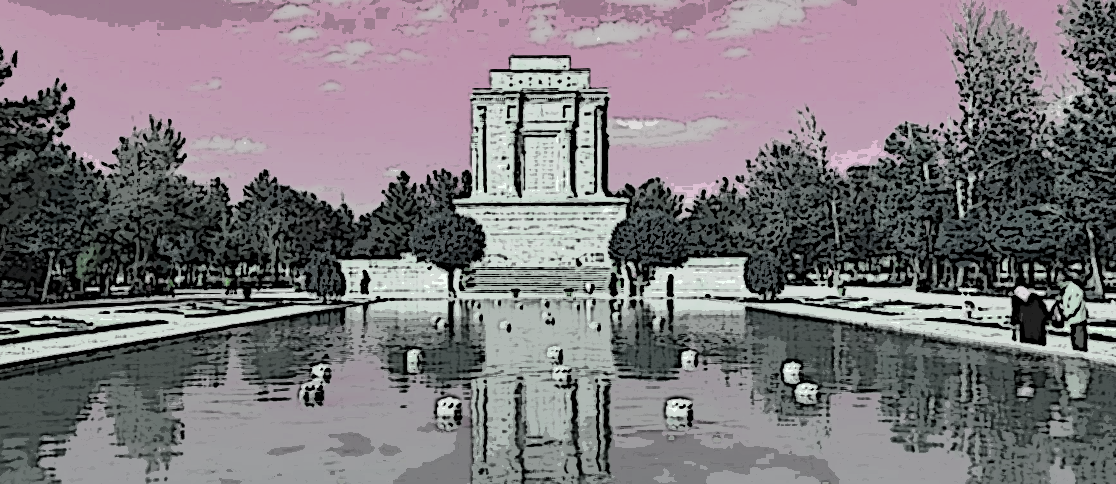

 Graphic designer in Isfahan, Iran, who created the Arabic / Persian typeface Toodeh in 2016. [
Graphic designer in Isfahan, Iran, who created the Arabic / Persian typeface Toodeh in 2016. [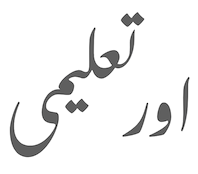 In 2017, SIL International released version 1.000 and in 2019 version 2.000 of the free Awami Nastaliq font. They write: Awami is an Urdu word meaning "of the people". It is an Arabic script font specifically intended for a wide variety of languages using the Nastaliq style of southwest Asia. This font is specifically aimed at minority language support. Lesser-known languages often require more vowel diacritics than Urdu. They may use a different set of base characters and diacritics, and the base characters often include more nuqtas to represent sounds that are not present in Urdu or standard Arabic. This font includes all the vowel diacritics and base characters (that we are aware of) required for languages using the Nastaliq style of Arabic script. This makes it unique among Nastaliq fonts. Nastaliq is considered one of the most beautiful scripts on the planet. Nastaliq has been called "the bride of calligraphy" but its complexity also makes it one of the most difficult scripts to render using a computer font. Its right-to-left direction, vertical nature, and context-specific shaping provide a challenge to any font rendering engine and make it much more difficult to render than the flat (Naskh) Arabic script that it is based on. As a result, font developers have long struggled to produce a font with the correct shaping but at the same time avoid overlapping of dots and diacritics. In order to account for the seemingly infinite variations, SIL's
In 2017, SIL International released version 1.000 and in 2019 version 2.000 of the free Awami Nastaliq font. They write: Awami is an Urdu word meaning "of the people". It is an Arabic script font specifically intended for a wide variety of languages using the Nastaliq style of southwest Asia. This font is specifically aimed at minority language support. Lesser-known languages often require more vowel diacritics than Urdu. They may use a different set of base characters and diacritics, and the base characters often include more nuqtas to represent sounds that are not present in Urdu or standard Arabic. This font includes all the vowel diacritics and base characters (that we are aware of) required for languages using the Nastaliq style of Arabic script. This makes it unique among Nastaliq fonts. Nastaliq is considered one of the most beautiful scripts on the planet. Nastaliq has been called "the bride of calligraphy" but its complexity also makes it one of the most difficult scripts to render using a computer font. Its right-to-left direction, vertical nature, and context-specific shaping provide a challenge to any font rendering engine and make it much more difficult to render than the flat (Naskh) Arabic script that it is based on. As a result, font developers have long struggled to produce a font with the correct shaping but at the same time avoid overlapping of dots and diacritics. In order to account for the seemingly infinite variations, SIL's 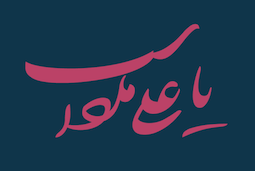 Tehran, Iran-based designer of the Persian typeface Mirza (2017), who explains: Mirza is a contemporary Nastaliq typeface based on the hand of Mirza Gholam-Reza Esfahani, one of the most celebrated Persian calligraphers of Qajar era. This typeface is the result of an extensive study on the best specimens of Mirza Gholam-Reza's work during the last decade of his life. Mirza is a display typeface that fully supports Arabic, Persian and Urdu languages. The Nastaliq figures in this typeface are designed based on the traditional technique seen in Qajar seals. Mirza won an award at
Tehran, Iran-based designer of the Persian typeface Mirza (2017), who explains: Mirza is a contemporary Nastaliq typeface based on the hand of Mirza Gholam-Reza Esfahani, one of the most celebrated Persian calligraphers of Qajar era. This typeface is the result of an extensive study on the best specimens of Mirza Gholam-Reza's work during the last decade of his life. Mirza is a display typeface that fully supports Arabic, Persian and Urdu languages. The Nastaliq figures in this typeface are designed based on the traditional technique seen in Qajar seals. Mirza won an award at 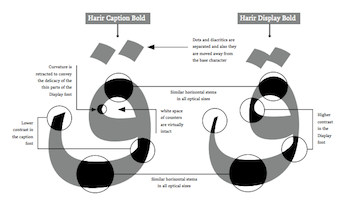 Type designer and kinetic graphic designer born in Tehran, Iran (1985). He holds a BA in graphic design with emphasis on typography from the University of Tehran. Since 2005 he has been working with advertising agencies and specializes in graphical animation. Winner at the
Type designer and kinetic graphic designer born in Tehran, Iran (1985). He holds a BA in graphic design with emphasis on typography from the University of Tehran. Since 2005 he has been working with advertising agencies and specializes in graphical animation. Winner at the  At the London College of Communication in 2010, Borna Izadpanah (b. Iran) created a modular pair of typefaces, one for Latin and one for Farsi.
At the London College of Communication in 2010, Borna Izadpanah (b. Iran) created a modular pair of typefaces, one for Latin and one for Farsi. 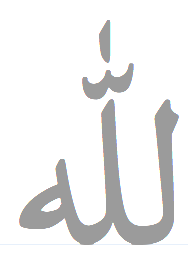 The Persian Modern family of fonts consists of 12 text fonts, and is based on the FarsiTeX Scientific fonts released into the public domain by the FarsiTeX Project Team (1996-2004). Free downloads at
The Persian Modern family of fonts consists of 12 text fonts, and is based on the FarsiTeX Scientific fonts released into the public domain by the FarsiTeX Project Team (1996-2004). Free downloads at 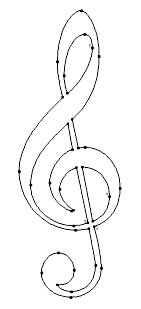 The GNU Freefont is continuously being updated to become a large useful Unicode monster. GNU FreeFont is a free family of scalable outline fonts, suitable for general use on computers and for desktop publishing. It is Unicode-encoded for compatability with all modern operating systems. There are serif, Sans and Mono subfamilies. Also called the "Free UCS Outline Fonts", this project is part of the larger Free Software Foundation. The original head honcho was
The GNU Freefont is continuously being updated to become a large useful Unicode monster. GNU FreeFont is a free family of scalable outline fonts, suitable for general use on computers and for desktop publishing. It is Unicode-encoded for compatability with all modern operating systems. There are serif, Sans and Mono subfamilies. Also called the "Free UCS Outline Fonts", this project is part of the larger Free Software Foundation. The original head honcho was  Based in Teheran, Hossein Yektapour used a square grid to guide the design of
Based in Teheran, Hossein Yektapour used a square grid to guide the design of 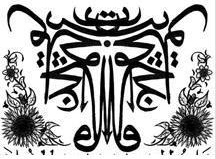 2006 article in Ping Mag dealing with Iranian typography.
2006 article in Ping Mag dealing with Iranian typography. 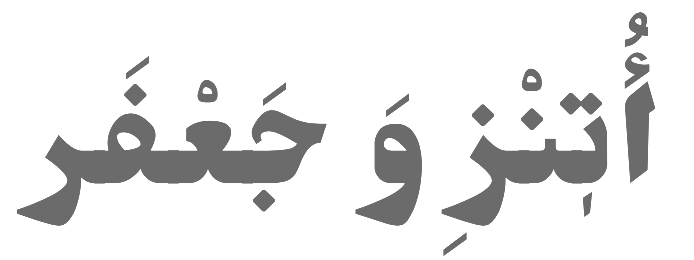 A bold free font created in 2015 and 2016. Arabic design by Kourosh Beigpour, Latin design by Eben Sorkin, engineering by Lasse Fister and Khaled Hosny. They write: Jomhuria is a dark Persian/Arabic and Latin display typeface, suitable for headline and other display usage. The name means republic, and the spark of inspiration for the design was a stencil of Shablon showing just a limited character set just for the Persian language without any marks, vowels or Latin glyphs. Shablon was designed 30 years ago in Iran, and is reinterpreted by Kourosh to incorporate contemporary techniques, aesthetics and of course some personal taste. While inspired by the spirit of Shablon, Jomhuria is a new typeface that stands on its own. Kourosh created an additional original Latin design that is tailored to harmonize with the aesthetics of the Persian/Arabic design.
A bold free font created in 2015 and 2016. Arabic design by Kourosh Beigpour, Latin design by Eben Sorkin, engineering by Lasse Fister and Khaled Hosny. They write: Jomhuria is a dark Persian/Arabic and Latin display typeface, suitable for headline and other display usage. The name means republic, and the spark of inspiration for the design was a stencil of Shablon showing just a limited character set just for the Persian language without any marks, vowels or Latin glyphs. Shablon was designed 30 years ago in Iran, and is reinterpreted by Kourosh to incorporate contemporary techniques, aesthetics and of course some personal taste. While inspired by the spirit of Shablon, Jomhuria is a new typeface that stands on its own. Kourosh created an additional original Latin design that is tailored to harmonize with the aesthetics of the Persian/Arabic design. 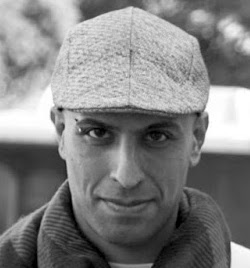 Type foundry in Los Angeles, CA, run by Kourosh Beigpour. Its typefaces:
Type foundry in Los Angeles, CA, run by Kourosh Beigpour. Its typefaces: 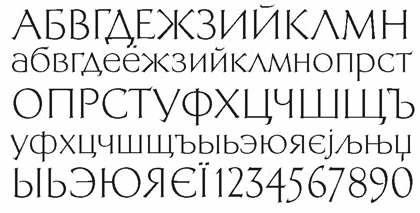 Moscow-based type, graphic and book designer (b. Tula, 1928, d. Moscow, 2008). In 1951, after her graduation from Moscow Printing Institute, she joined the type design team of VNII Polygraphmash, and worked there for forty years as a designer, head of the design department, and chief of the oriental type design unit. From 1992 until her death, she was a staff designer at
Moscow-based type, graphic and book designer (b. Tula, 1928, d. Moscow, 2008). In 1951, after her graduation from Moscow Printing Institute, she joined the type design team of VNII Polygraphmash, and worked there for forty years as a designer, head of the design department, and chief of the oriental type design unit. From 1992 until her death, she was a staff designer at 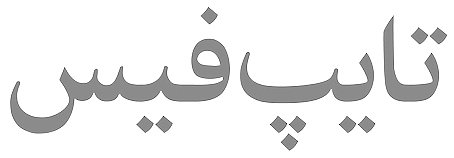 Tehran, Iran-based designer of an Arabic / Farsi typeface in 2014. [
Tehran, Iran-based designer of an Arabic / Farsi typeface in 2014. [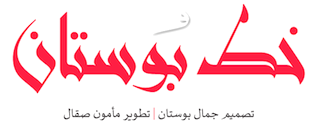 [
[
 [
[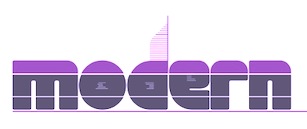 Iranian designer of a nice mini-poster that reads Modern (2015). [
Iranian designer of a nice mini-poster that reads Modern (2015). [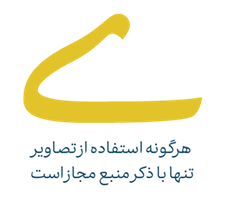 Tehran, Iran-based designer of the Farsi-Arabic typeface Omid (2014), which won an award at Granshan 2014. In 2017, he co-designed the wonderful Farsi font Vazeh Quranic with Reza Bakhtiarifard. Ray (by Reza Bakhtiarifard and Omid Emamiam) won an award at
Tehran, Iran-based designer of the Farsi-Arabic typeface Omid (2014), which won an award at Granshan 2014. In 2017, he co-designed the wonderful Farsi font Vazeh Quranic with Reza Bakhtiarifard. Ray (by Reza Bakhtiarifard and Omid Emamiam) won an award at  Iranian software specialist and founder of the open software support and development group Kary Foundation.
Iranian software specialist and founder of the open software support and development group Kary Foundation.  Graphic and type designer in Tehran, Iran, b. 1990, who has been showered with type design awards. Creator of the nine weight Arabic / Persian typeface
Graphic and type designer in Tehran, Iran, b. 1990, who has been showered with type design awards. Creator of the nine weight Arabic / Persian typeface 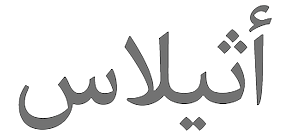 Sahar Afshar is a type designer, printing historian and researcher from Iran. She studied at the University of Tehran and the University of Reading (where she obtained an MA in Typography & Graphic Communication). After graduating, she has been working on the design of Arabic typefaces and researching the printing of Arabic and Indic scripts. She is currently based in London, and obtained a PhD from Birmingham City University, where she researched Punjabi printing history and culture in post-war Britain.
Sahar Afshar is a type designer, printing historian and researcher from Iran. She studied at the University of Tehran and the University of Reading (where she obtained an MA in Typography & Graphic Communication). After graduating, she has been working on the design of Arabic typefaces and researching the printing of Arabic and Indic scripts. She is currently based in London, and obtained a PhD from Birmingham City University, where she researched Punjabi printing history and culture in post-war Britain.  Born in Aleppo, Syria,
Born in Aleppo, Syria, 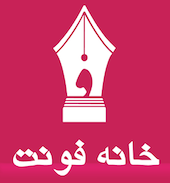 Hamedan, Iran-based designer of the open source Farsi / Arabic text typeface Behdad (2016), the Farsi typeface Farboad (2016), and the highly scripted and multilevel Arabic typeface Special Font Quran (2016, a redesign of Taha).
Hamedan, Iran-based designer of the open source Farsi / Arabic text typeface Behdad (2016), the Farsi typeface Farboad (2016), and the highly scripted and multilevel Arabic typeface Special Font Quran (2016, a redesign of Taha). 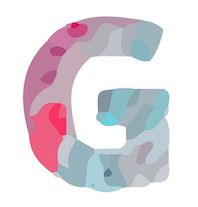 Graphic designer who was based in Rasht, Iran, who dabbles in experimental Persian type design. Reportedly, he is based in Canada in 2020. He has made
Graphic designer who was based in Rasht, Iran, who dabbles in experimental Persian type design. Reportedly, he is based in Canada in 2020. He has made